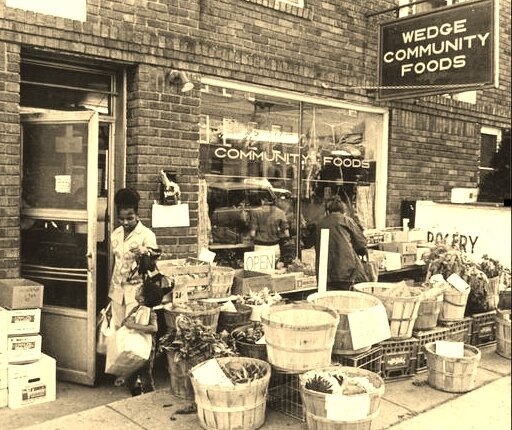In honor of Black History Month, we take this opportunity to highlight the deep roots and vital importance of Black collective economics in the development of the modern co-op. This history has been brought to light by Dr. Jessica Gordon Nembhard in her book, Collective Courage: A History of African American Cooperative Economic Thought and Practice.
In her book, Dr. Nembhard writes about W.E.B.Du Bois and his 1907 scholarly study of African American cooperatives, which emphasized forming a group economy to protect Blacks from the ongoing onslaughts of marginalization, segregation, racism, and outright sabotage. His Negro Cooperative Guild (1918) advanced his philosophy of using economic cooperation—not just for goods, but for land, services, and anything necessary—to benefit the entire community. The following year, a co-op began operating meat markets in Memphis and were very successful, selling double the number of original shares offered. They grew to five stores and served about 75,000 people.
From the arrival of the first slaves, both free and enslaved Blacks relied on cooperation for survival and formed mutual aid societies to help each other with burials, health issues, and buying freedom for each other whenever possible. A famous example of a cooperative entity was the Underground Railroad. Ingeniously, during the Civil War, African American women found opportunity in South Carolina, growing cotton on abandoned farms; their organization remained independent and grew to include several hundred women.
After the Civil War, Black farmers formed their own co-operative when they were refused entry into the white organization and had over a million members by 1891. They were politically active and created numerous other co-ops. As these began to take business away from white establishments, they were often met with retaliation which ranged from slander to violent attacks and death.
Following Du Bois’ philosophy, numerous Black-owned co-ops were established throughout the US from 1920–1940, in cities and rural areas, in the North and South, in all kinds of industries. They covered a wide range of community and consumer needs: gas stations, grocers, schools, credit unions, insurance, and housing. Another important period of African American cooperative growth was during the 1960s and 70s, with support from the Federation of Southern Cooperatives and the Black Panther Party. As Dr. Nembhard writes, nearly all African American leaders, whether radical or conservative, have promoted cooperative economics as a way for Black communities to survive discrimination and racism, and to thrive.
The African American cooperative economic movement helped keep money and profits invested within the Black community, thereby creating prosperity for everyone. However, it was often a dangerous and courageous undertaking, which may be why this history is not widely known.
For further reading: Collective Courage: A History of African American Cooperative Economic Thought and Practice, by Dr. Jessica Gordon Nembhard.
If readers would like to order the book, Collective Courage, they can do so online using the links below and our local bookshops will get credit!
(Vallejo) Alibi Bookshop’s link is: https://bookshop.org/shop/alibibookshop
Bookshop Benicia’s link is: https://bookshop.org/shop/bookshopbenicia
Article written by Janine Ryle

